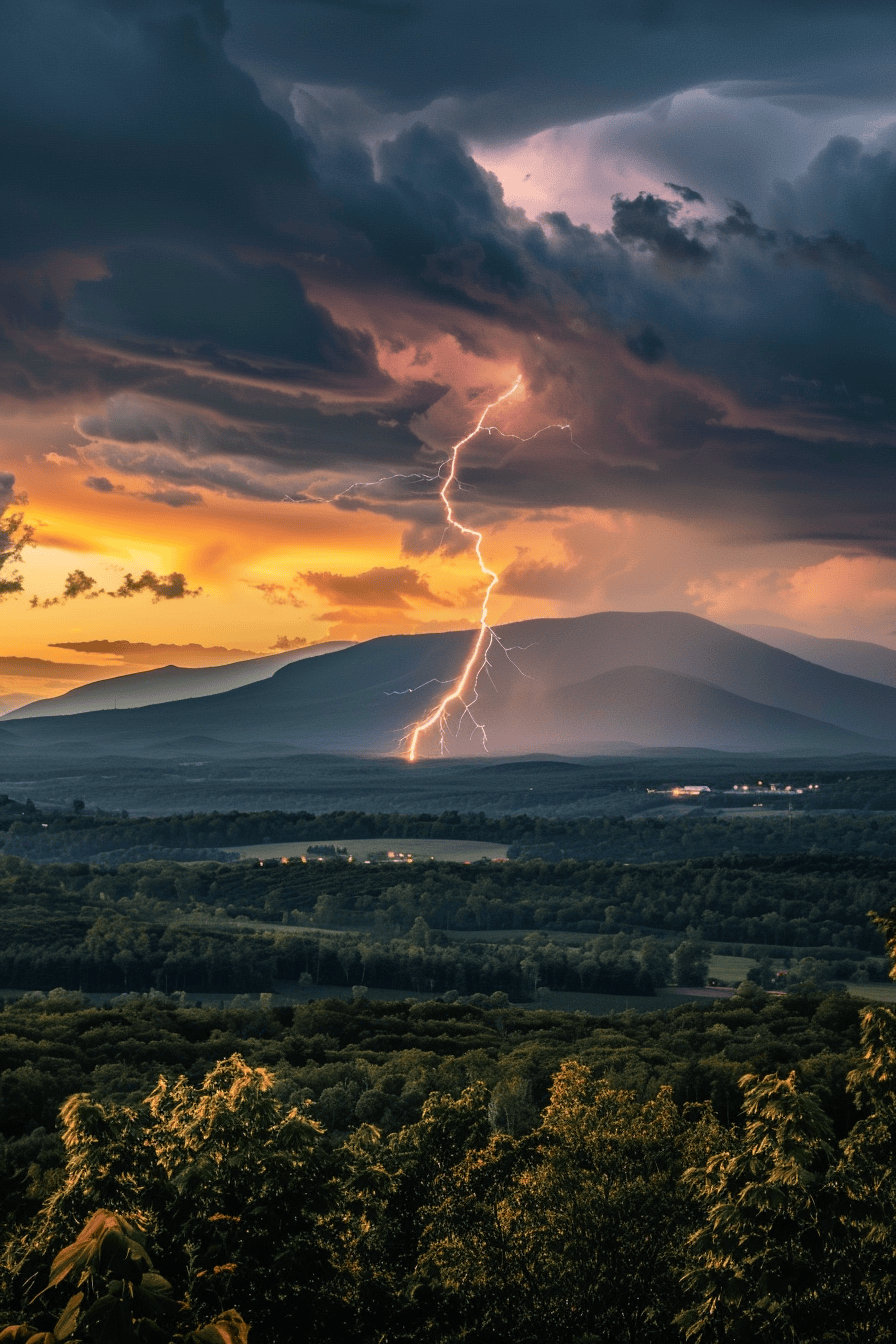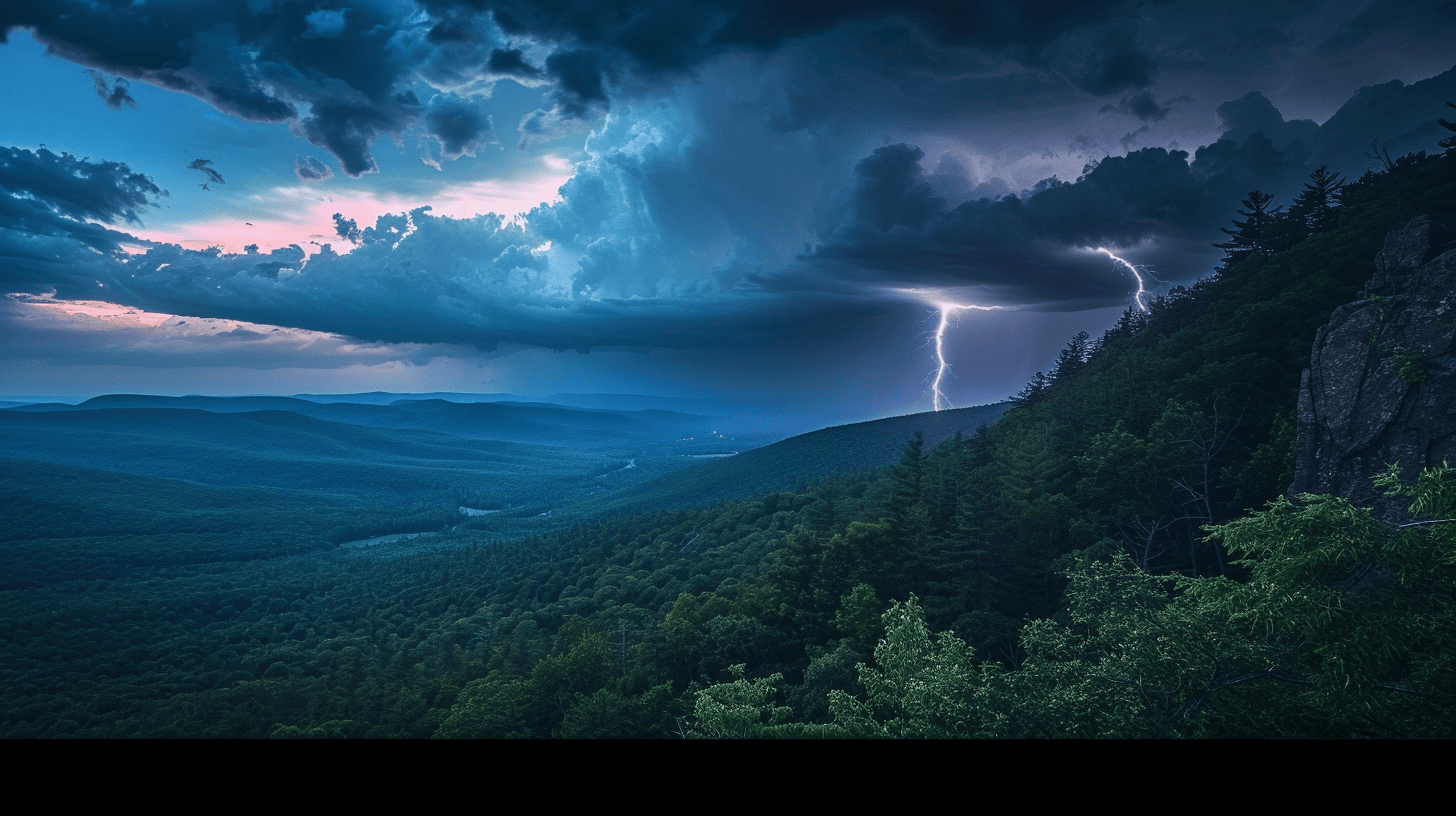Disclosure: This content may contain affiliate links. Read my disclosure policy.
I’ve been “caught” in a thunderstorm on a mountain more than once. It’s awesome, exciting, humbling and very NOT fun in equal measure.
In recent years, our understanding of lightning safety in the backcountry has developed significantly. Much longstanding advice remains in place, but important debunking has taken place. We no longer have to rely on opinion and “experience”. New research has highlighted better ways to stay safe.
Hiking in the mountains can be an exhilarating experience, but it also comes with its risks. This post aims to provide you with the most up-to-date information on how to protect yourself when while you’re in the mountains and a thunderstorm rolls in.
Read on to get the latest mountain lightning safety info…
What are the 13 Lightning Safety Myths?
- The “lightning position” (crouching on a sleeping pad with heels touching and hands over ears) is effective for protection.
- Sitting on a sleeping pad provides insulation from ground strikes.
- Metal attracts lightning.
- Tents provide protection from lightning.
- Caves and rocky overhangs are safe places to shelter during a thunderstorm.
- Lying down is safer than standing during a lightning storm.
- You can only be struck by lightning if the storm is directly overhead.
- It’s safe to stay outside until it starts raining.
- You can be “accidentally” caught in a thunderstorm without any decision-making errors.
- Standing under a tall or solitary tree is safer than being in the open.
- Lightning only causes injuries through direct strikes.
- It’s safe to resume outdoor activities immediately after the last thunder is heard.
- Weather forecasts for nearby towns are sufficient for planning mountain activities.
Below, these myths are contrasted with current expert advice and scientific understanding of lightning safety practices in the backcountry.
The Basics of Lightning Safety
What Even Causes Thunder?
When lightning strikes nearby, it creates a powerful sound we know as thunder which can typically be heard within a radius of about 10 miles from the lightning strike. Thunder is a direct result of lightning’s intense effect on the air around it. Here’s how it happens:
- Lightning Discharge: As a bolt of lightning cuts through the air, it creates a channel of extreme heat.
- Rapid Heating: The air in this channel is superheated to temperatures that can reach an astounding five times hotter than the surface of the sun.
- Expansion and Contraction: This extreme and sudden heating causes the air to expand explosively. Immediately after the flash, the air rapidly cools and contracts.
- Sound Wave Creation: This violent process of expansion and contraction generates a powerful sound wave.
- Thunder: What we hear as thunder is this sound wave rippling through the atmosphere.
It’s crucial to understand that if you can hear thunder, you’re within the strike zone of the storm. This sound should serve as an immediate alert to seek safe shelter.
The intensity and duration of the thunder you hear can provide clues about the lightning’s distance and the storm’s size…
Distance of Lightning Strikes
Lightning can strike from a storm up to 10 miles away, so don’t wait until the storm is directly overhead to take action. The first flash of lightning is often the most deadly because people haven’t taken protective action yet. According to the National Weather Service…
Since you see lightning immediately and it takes the sound of thunder about 5 seconds to travel a mile, you can calculate the distance between you and the lightning. If you count the number of seconds between the flash of lightning and the sound of thunder, and then divide by 5, you’ll get the distance in miles to the lightning: 5 seconds = 1 mile; 15 seconds = 3 miles; 0 seconds = very close.
Be aware that direct strikes (where lightning hits a person directly) account for only 3-5% of injuries. Ground strikes, where electricity travels through the ground, cause up to 50% of injuries. Indeed, a friend has actually experienced this in group setting where several people felt zapped, though there were no serious injuries.
We think of lightning as a precise strike kind of phenomenon, with a limited zone of effect. In fact, it has a much bigger footprint than most of us commonly assume.

Is it Safe to Hike in Lightning?
According to a 2022 study…
Out of a total of 11,125 emergencies during mountain hiking [in the Swiss Alps], there were eight cases (none fatal) of lightning strikes (0.07%) in the observational period. This translates to a prevalence of 0.8 cases per year.
On the other hand, it’s quite something to witness a NYDEC steward literally running down a mountain to get away from a storm.
Remember, you don’t even need a reason to turn around.
Which are the Worst Months for Lightning Safety?
Lighting can strike at any time of year but it peaks in June, July and August.
BTW, you might also enjoy…
- NEW › New York Hike Finder Tool
- CATSKILLS › Escarpment Trail Guide
- STAY › Find Your Perfect Catskills Stay
- ADIRONDACKS › Dix Range from Elk Lake
- ENTERTAINMENT › 15 Best & Worst Hiking Movies
- Follow › My Instagram @TotalCatskills
- Follow › My Substack @TotalCatskills
- Follow › My writing for Times Union
The New Lightning Safety
Check Weather Forecasts Before You Go
Before setting out on any hike, of course, it’s always crucial to check the weather forecast. Use multiple sources to get a comprehensive understanding of the potential weather conditions. Modern weather forecasting is highly accurate, so there’s no excuse not to be informed.
Check the forecast for your specific trail or peak, not just the nearest town. I use mountain-forecast.com for my weather checks.
Pack Essential Gear
Always be prepared with the right gear. This includes waterproof clothing, sturdy boots, an emergency shelter (like a small tent or bivy sack), a first aid kit, and emergency supplies. Packing these essentials can make a significant difference if you get caught in a storm.
One piece of gear that won’t help at all: your sleeping pad. Sitting on a sleeping pad does not provide insulation from ground strikes.
Get access to hyper-detailed trail guides, insider tips, and expert advice. Join a vibrant community of like-minded hikers, receive exclusive content, and embark on unforgettable outdoor adventures. Whether you’re a seasoned outdoor enthusiast or just starting out on your hiking journey, this website provides invaluable resources to help you explore the best trails in the Catskills, Adirondacks, Hudson Highlands, Berkshires, and beyond. Get access now to all content on this website instantly and enjoy unique supporter benefits.
Recognize the Signs of an Approaching Thunderstorm
Being able to identify the signs of an approaching storm can give you precious time to seek shelter. Look out for cumulonimbus clouds, sudden drops in temperature, and gusty winds.
On a recent hike up Slide Mountain in The Catskills, the humidity before the storm rolled through was off the charts. Then the wind picked up right before the storm hit. So those changes are worth watching for. In addition to rumbling, they give you advance warning to look for shelter and wait things out.
After the storm passes, the air is often crisp and clear and cool—perfect for hiking. The difference is shocking.
Counting the time between lightning and thunder can help you gauge the storm’s distance.

Seek Lower Ground
If you see a storm approaching, move away from peaks, ridges, and open areas. This is not always possible, though—you may be deep in the backcountry, or high on a mountain.
Lower ground always offers better protection, yes. But you should always avoid isolated tall trees or objects. Look for a large patch of shorter trees of uniform height.
Danger of Standing Under Trees
While it might seem safer to stand under a tree, lightning tends to strike taller objects. Standing under a tall or solitary tree can increase your risk due to ground strikes. It’s safer to find a grove of shorter trees of uniform height.
Find Shelter Wisely
While natural shelters like caves or overhangs might seem like a good option, they can actually be dangerous. Lightning is always interested in the shortest path and that means it can travel through rock and jump to and through you.
Instead, dense forested areas can offer better protection than open spaces.
Group Safety
Avoid clustering in confined areas during a storm, as this can lead to multiple casualties if lightning strikes nearby. Establish clear communication and meeting points with your group.
Set Up Emergency Shelter
Staying dry is crucial to avoid hypothermia. You always have your rain layer, right? If you can’t find natural shelter, use your bivy sack or emergency tent. Make sure your shelter is away from tall objects that could attract lightning.
Avoid Conductive Objects
While metal doesn’t attract lightning, it does conduct electricity very well. Avoid pitching tents near metal structures like bear-hang poles. Stay away from water sources too.
Positioning Yourself Safely
The traditional “lightning position”—crouching down with heels touching—is largely ineffective. Instead, you’re better off focusing on moving to a safer location.
Crouching can reduce your profile, but lying down increases your ground contact and risk from ground strikes.
If Caught in the Open
If you find yourself with no safe options nearby, crouching can help reduce your risk by making you a smaller target. However, the best option is always to keep moving towards safer terrain.
Conclusion
Preparation and quick response are key to staying safe during a thunderstorm while hiking. By understanding modern lightning safety practices and making informed decisions, you can minimize your risk and enjoy your outdoor adventures safely. Remember, the best way to avoid getting caught in a storm is to plan ahead and respect the power of nature.
Read More
Bookmark and read through this website’s deep hiking safety content.
Get full access…
Get instant access to the full version of this site and enjoy great supporter benefits: full galleries, full trail notes, early access to the latest content, and more.
Hot on the website right now…
Follow for more…
Follow my @TotalCatskills content on Instagram for regular hiking inspo and safe, inclusive community.


